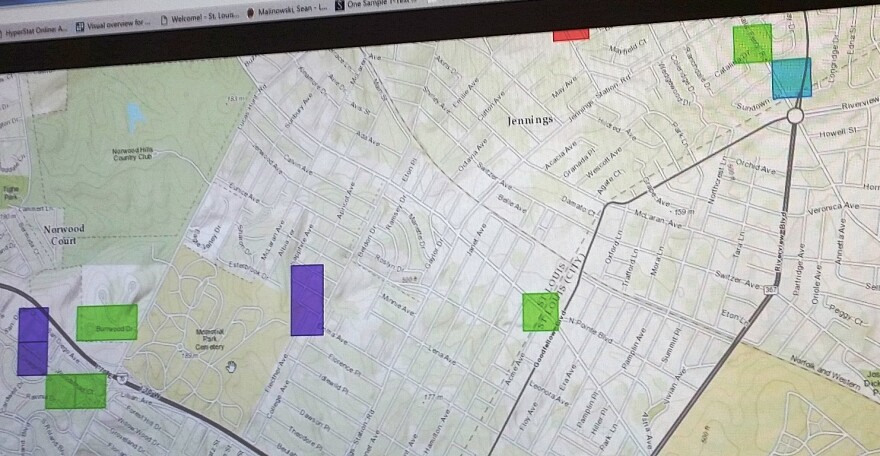Mathematical algorithms power almost everything these days, from trades on the New York Stock Exchange to your Facebook feed. Now, the St. Louis County police department is betting it can reduce crime by using something called predictive policing.
The new software, HunchLab, was developed by a Philadelphia-based company with technical help from professors at Temple University, said Sgt. Colby Dolly, the supervisor of the county's crime analysis unit.
"It takes historical crime data and combines it with a lot of other variables such as terrain, where bus stops and other public facilities are, and then produces a risk profile for every single little section of St. Louis County," Dolly said.
Officers can then concentrate patrols on "hot spots" in their precincts. They might not be what are traditionally considered "high-crime" areas, Dolly said, but the computer has determined that there is a higher risk of crime occurring in that specific 500 square-meter area than the others around it.
"The goal here is that you actually prevent crime," Dolly said. "You’re saving not only the criminal justice system and the police department money, but you’re also saving society at large, especially the victim, funds, time, all these intangible things that go along with crime."
Because predictive policing tools are relatively new, there's not a lot of research into how well they achieve a crime-prevention goal. The Greensboro, N.C., police department saw impressive results with HunchLab, said Lee Hunt, the department's information systems manager.
"We had reductions in our residential burglaries, our theft from auto and auto theft," Hunt said. "We almost had a 50 percent reduction in our daytime residential burglaries."
But a study by the RAND Corporation found less spectacular numbers in Chicago and Shreveport, La. John Hollywood, a senior operations researcher at RAND, said predictive policing tools like HunchLab will be most beneficial in departments that are not already providing real-time crime information to their officers in some form.
"We think there may be some fundamental limits" as to how much better the predictive policing tools can forecast crime than older methods, Hollywood said. "There's still a lot of inherent randomness in crime."
Predictive policing raises Fourth Amendment concerns for Andrew Ferguson, a professor at the University of Washington, D.C., School of Law.
"What might not be enough suspicion generally to stop that person might be if the computer algorithm has told you to be on the look-out for a particular suspicious behavior," Ferguson said. He added that officers should be required to say if a predictive policing tool led to an arrest, and the courts will then have to sort out how much weight to give to that "tip."
"My hope for predictive policing is that people will start thinking about why these places generate crime and intervening in other ways that aren't just putting more police on the streets," Ferguson said. Dolly, with the St. Louis County Police, said that's the department's intention.
The county used asset forfeiture money to cover the $45,000 set-up costs for HunchLab. Yearly expenses will run about $35,000, Dolly said. All of the department's in-car laptops should have the software installed by the spring, he said, and the department will review the data after a year to assess its crime-fighting value.
Follow Rachel Lippmann on Twitter: @rlippmann




